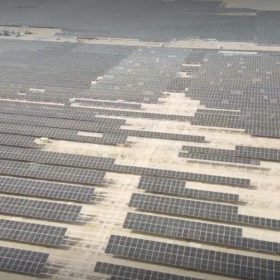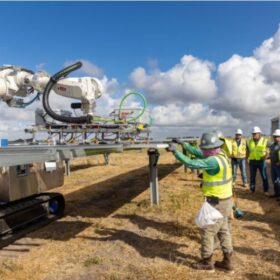Researchers from the Indian Institute of Technology Bombay have analyzed the techno-economic viability of improving photovoltaic (PV) plants with degraded modules by reconfiguring them.
The team modeled a utility-scale PV plant in Python and investigated different reconfiguration strategies and degradation modes, with project economic viability being analyzed for India and the United States.
“Under several likely scenarios, reconfiguration could be the only option left to the power plant operators to improve the energy production with existing modules,” the group said. “In this paper, reconfiguration is defined as changing the electrical positions of the PV modules within a block connected to one string monitoring box (SMB) to enhance the performance of the entire PV array. The same process could be repeated throughout the other blocks connected to other SMBs to get performance enhancement at the central inverter or entire power plant level.”
The utility-scale plant simulated was based on 315 W modules, with 30 of them connected in a string, resulting in a total power of 9.45 kW. Another 10 panels were connected in parallel to the SMB, reaching a capacity of 94.5 kW, while 10 SMBs were connected to a central inverter for a total power of 945 kW. The utility-scale plant had 30 of these inverters, resulting in a plant capacity of 28.35 MW.
Different degradation
Initially, two modes of degradation were investigated. The first was the reduction of shunt resistance (Rsh), usually caused by potential-induced degradation (PID) in hot and humid climates. The second was the increase in series resistance (Rs), usually resulting from corrosion, interconnect degradation or solder bond issues. In both cases, the team tried to reconfigure the systems by grouping similar modules in new strings. However, this resulted in improvement only in the first case (2.72%), while performance worsened in the second case (-0.64%).
Following this experiment, that team focused only on cases of non-uniform reduction in current, such as those involving Rsh degradation in PID, as reconfiguration was found to have potential in those cases. Six different strategies – called C1, C2, C3, C4, C5, and C6 – were outlined for the proposed scenarios, with different cost burdens. Overall, C6 requires reconfiguration of 10% of the modules, C5 20%, C4 40%, C1 50%, C2 80% and C3 90%.
The group explained that strategy C1 requires picking the top 15 modules from each string and creating new strings, while C2 divides each string into five sets of six modules each and calibrates these sets in descending order of average fill factor (FF) for all the sets generated from all of the 10 strings. Moreover, C3 divides the string into 10 sets of 3 modules each and orders these sets in descending order of the average FF for all the sets generated from all of the 10 strings. Furthermore, C4, C5, and C6 have different values of modules and the associated module swaps required.”
Results
The analysis showed that the C6 strategy helped performance to gain 0.3212%, while C5 and C4 gained 0.9899% and 2.4053%, respectively. C1 was found to gain 2.713%, with C2 and C3 achieving 3.65% and 3.7923% improvements, respectively. Economically, those strategies requiring a different rate of panel change were found to be more viable where module costs are lower.
“If 100% of the modules in a 30 x 10 array were to change positions, it would need 150 swaps and with 10 people, it could be finished in a day,” the academics said. “Assuming the labor cost for India is $0.74/h and for the United States is $7.25/h and 8 working hours per day, the labor cost per module swap in India is $0.198/module and for the United States it is $1.93/module. Thus, 100 people could reconfigure the entire 28.35 MW plant in approximately one month.”
Based on these findings, the team concluded that reconfiguration may make economic sense when some crucial conditions are met, such as a small sample of module-level I-V, low labor costs and short payback. Reconfiguration would also be viable when cell cracks or permanent soiling due to cementation are present, the group concluded.
Its work was presented in “Viability of performance improvement of degraded Photovoltaic plants through reconfiguration of PV modules,” published in Solar Energy.
This content is protected by copyright and may not be reused. If you want to cooperate with us and would like to reuse some of our content, please contact: editors@pv-magazine.com.








By submitting this form you agree to pv magazine using your data for the purposes of publishing your comment.
Your personal data will only be disclosed or otherwise transmitted to third parties for the purposes of spam filtering or if this is necessary for technical maintenance of the website. Any other transfer to third parties will not take place unless this is justified on the basis of applicable data protection regulations or if pv magazine is legally obliged to do so.
You may revoke this consent at any time with effect for the future, in which case your personal data will be deleted immediately. Otherwise, your data will be deleted if pv magazine has processed your request or the purpose of data storage is fulfilled.
Further information on data privacy can be found in our Data Protection Policy.